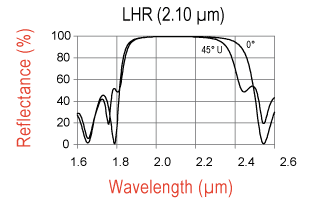


Find the angle of refraction when the direction of the ray is (a) from air to water and (b) from water to air. SNELL’S LAW SNELL’S LAW OF REFRACTION When light travels from a material with one index of refraction to a material with a different index of refraction, the angle of incidence is related to the angle of refraction byĮxample 1 Determining the Angle of Refraction A light ray strikes an air/water surface at an angle of 46 degrees with respect to the normal. b) c / 2 c) 2 c / 3 d) c e) 1.5 cĬhapter 26: The Refraction of Light: Lenses and Optical Instruments Section 2: Snell’s Law and the Refraction of Light If the index of refraction for a given material is 1.5, what is the speed of light in that material relative to the speed of light in a vacuum, c ? a) No material can have an index greater than 1 since light cannot travel faster than c. What is the ratio of the refractive index of material A to that of material B? a) 0.71 b) 0.84 c) 1.0 d) 1.2 e) 1.4Ģ6.1.3. Through experiment, the speed of light passing through material A is 1.4 times greater than when the same light passes through material B. The speed of light has the same value everywhere in the Universe.Ģ6.1.2. In which one of the following substances does light have the largest speed? a) diamond b) benzene c) carbon dioxide d) water e) None of the above. DEFINITION OF THE INDEX OF REFRACTION The index of refraction of a material is the ratio of the speed of light in a vacuum to the speed of light in the material: Index of RefractionĢ6.1.1. Light travels through a vacuum at a speed Light travels through materials at a speed less than its speed in a vacuum. Table Of Contents The Index of Refraction Snell’s Law and the Refraction of Light Total Internal Reflection Polarization and the Refraction of Light (AP?) The Dispersion of Light: Prisms and Rainbows (AP?) Lenses The Formation of Images by Lenses The Thin-Lens Equation and the Magnification Equation Lenses in Combinations The Human Eye (AP?) Angular Magnification and the Magnifying Glass (AP?) The Compound Microscope The Telescope Lens Aberrations Ĭhapter 26: The Refraction of Light: Lenses and Optical Instruments Section 1: The Index of Refractionīoundary Effects Back in Chapter 16 we discussed two important effects a boundary can have on a wave Reflection (Chapter 25) Topic for this chapter Occurs when a wave strikes a medium boundary and “bounces back” into the original medium Refraction will be discussed in this Chapter Transmission of wave from one medium to the next.

Analyze simple situations in which the image formed by one lens serves as the object for another lens. Use the thin lens equation to relate the object distance, image distance, and focal length for a lens, and determine the image size in terms of the object size. Determine by ray tracing the location of the image of a real object located inside or outside the focal point of the lens, and state whether the resulting image is upright or inverted, real or virtual. ĪP Learning Objectives Geometric optics Lenses Students should understand image formation by converging or diverging lenses, so they can: Determine whether the focal length of a lens is increased or decreased as a result of a change in the curvature of its surfaces, or in the index of refraction of the material of which the lens is made, or the medium in which it is immersed. Identify conditions under which total internal reflection will occur. Use Snell’s Law to relate the directions of the incident ray and the refracted ray, and the indices of refraction of the media. Show on a diagram the directions of refracted rays. In the figure, a converging lens $\left(f_$ of the image produced by the second lens.Ch 26 Light Refraction: Lenses and Optical InstrumentsĬhapter 26 The Refraction of Light: Lenses and Optical InstrumentsĪP Learning Objectives Geometric optics Reflection and refraction Students should understand the principles of reflection and refraction, so they can: Determine how the speed and wavelength of light change when light passes from one medium into another.


 0 kommentar(er)
0 kommentar(er)
